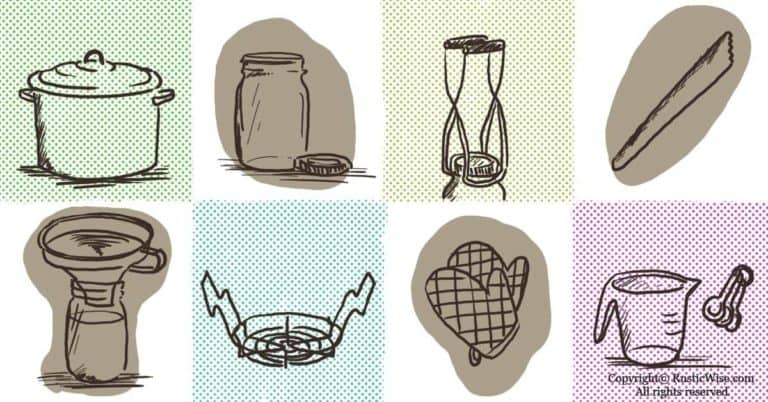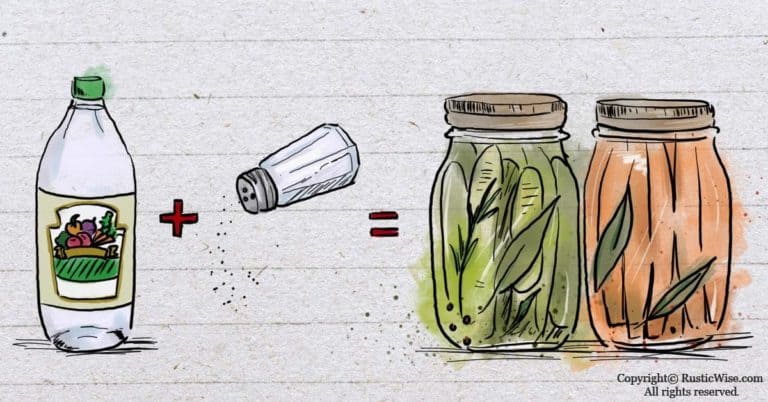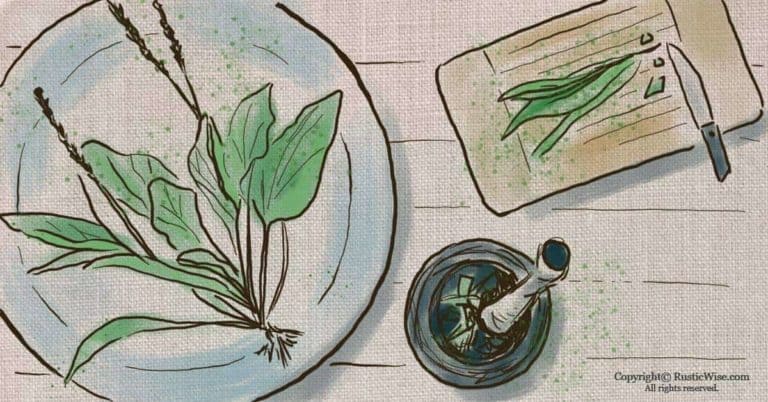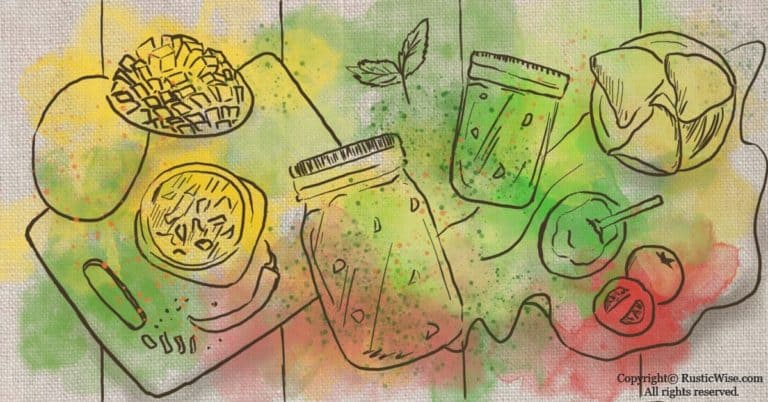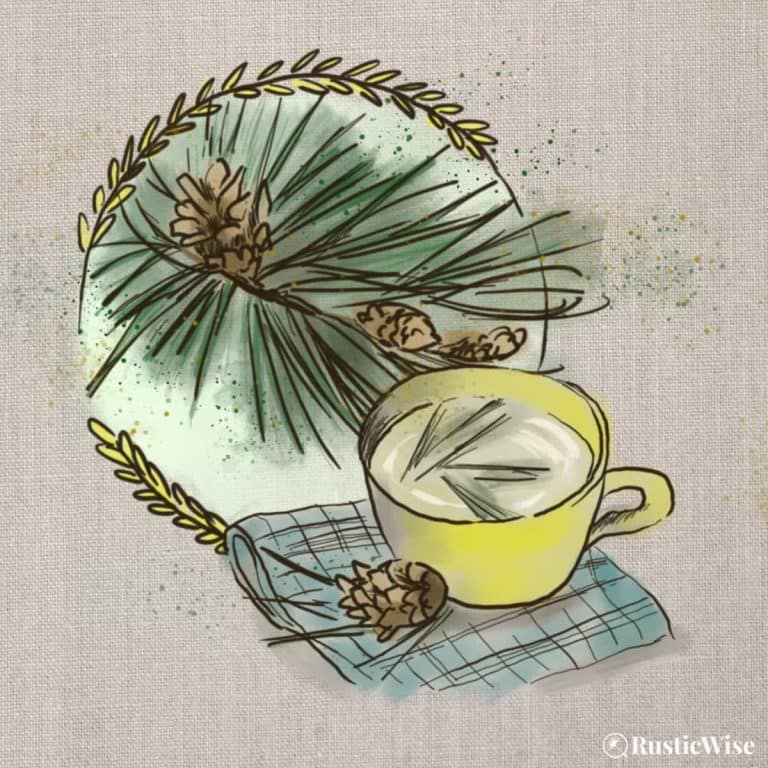How To Sterilize Canning Jars in the Microwave: Is This Safe?
Sterilizing jars before using them for canning is one of the most important steps in the process. Why? Because without sterilized jars, you could be inviting spoilage and foodborne illness into your home. A microwave is a handy appliance many have at home.
You might be wondering how to sterilize canning jars in the microwave. The short answer is that a microwave is NOT effective at killing all germs in a mason jar or canning jar. But, it can be used to sanitize (or reduce the number of microorganisms).
Whether you’re a seasoned home canner, or someone just getting started, it’s always best to keep safety in mind. Let’s go over the difference between sanitizing and sterilizing, home canning safety practices and why a microwave is not truly effective at sterilizing canning jars.
Why it’s important to sterilize jars for canning
Sterilizing jars is a critical step for food safety and preventing spoilage. Most foodborne illness and spoilage occurs because people don’t follow safe practices when handling, preparing, or storing foods .
Even if a glass jar looks clean, it may harbor harmful bacteria. Sterilizing jars helps to prevent any bacterial contamination while preserving your delicious homemade food. Foods and preserves packed in clean jars have a longer shelf life.
Do brand-new jars need to be sterilized? Yes, even glass jars fresh off the shelves require sterilization as a general rule of thumb.
The last thing you want is 30 jars of unusable jam simply because you didn’t sterilize the canning jars properly.
Tip: All canning jars should be washed in hot, soapy water and rinsed well prior to sterilizing.
Do you always need to pre-sterilize jars?
No, you don’t. Wait, didn’t I just say that it’s a good idea to sterilize jars? (Hang with me here.) Yes, it’s a good practice to sterilize jars; however, depending on the processing time of the recipe you’re using, and the canning process (pressure vs. water bath), you can skip pre-sterilizing in some instances.
These guidelines are set out by the knowledgeable folks at the National Center for Home Food Preservation (NCHFP).¹
You don’t need to pre-sterilize jars in the following cases:
- You’re using a pressure canner to can fruits, vegetables, or meat.
- You’re processing foods for more than 10 minutes using a water bath canner.
Any fruits, homemade jam, jelly, or pickled foods that have a processing time of less than 10 minutes require jars to be pre-sterilized. Many recipes for jelly have short processing times of 5 minutes.
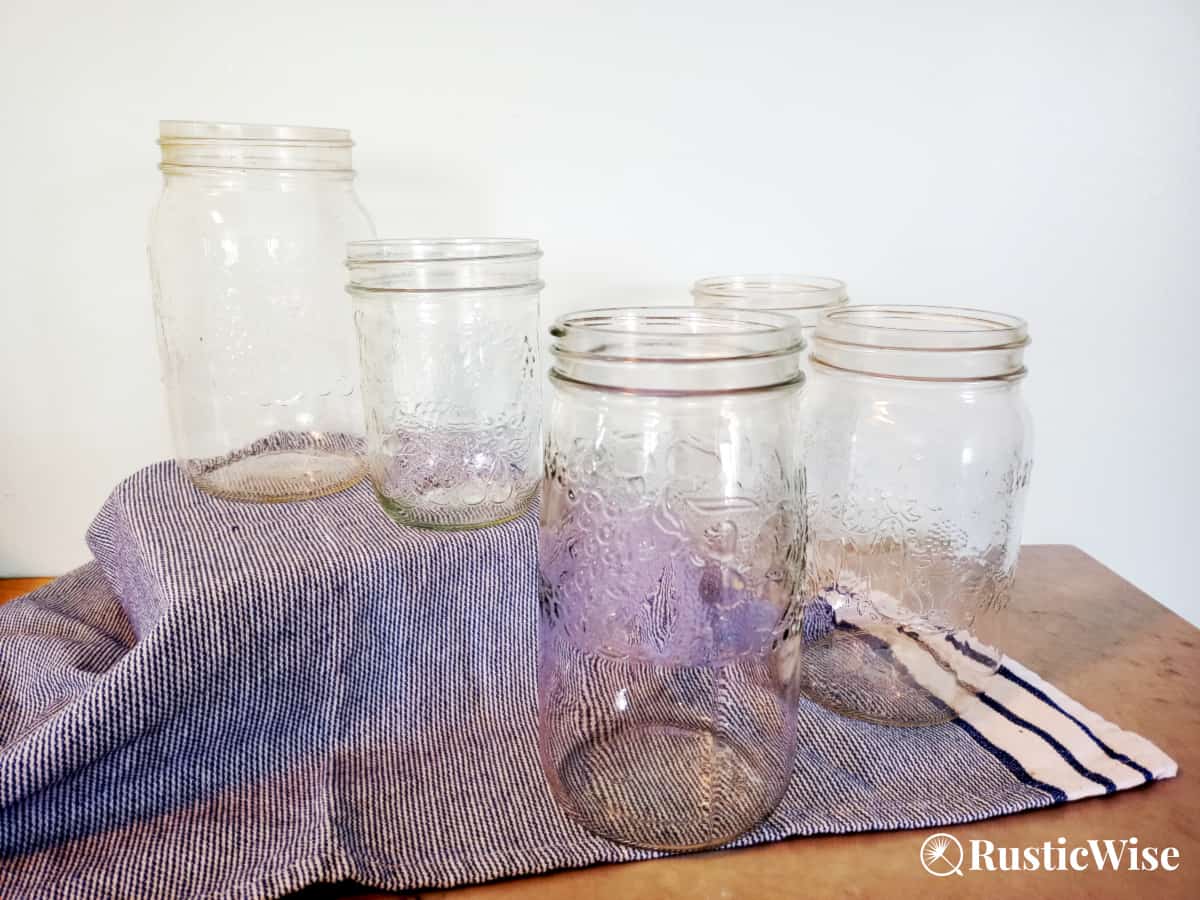
Is sterilizing the same thing as sanitizing?
No, sterilization is not the same as sanitization.
The U.S. Department of Agriculture (USDA) describes sterilization as the destruction of all microorganisms (or other life forms) through the use of heat, chemicals, or other means necessary.²
This is quite a high standard to uphold.
Sanitizing merely refers to the reduction of microorganisms to a safe level. Sanitizing involves first cleaning a surface or object to remove any dirt or debris. Follow this step by using a disinfectant to further remove (but not necessarily eliminate) bacteria. Sanitizing does not kill all viruses or spores.
How to sterilize canning jars in the microwave: does this work?
You often see people online microwave mason jars to sterilize them—but is this safe? Let’s explore this in more detail below.
If you’re short on stovetop space, and don’t want to sterilize by boiling in a pot, you may look for alternative ways to sterilize canning jars or jam jars. A microwave oven often comes to mind.
Many people wonder if a microwave oven by itself can effectively sterilize (remove all microorganisms) from canning jars? The simple answer is, no.
Here’s why.
Because a microwave’s internal temperature is very difficult to gauge, it’s a more unreliable method of sterilizing than using boiling water (which is the recommended method).
A microwave oven works by emitting energy. The energy emitted from a microwave is absorbed by food (or water). This causes the food to vibrate and create friction, which in turn cooks the food.
Every microwave is also different and may require varying heating times. In addition, microwaves have a knack for uneven heating (ever reheated a piece of leftover lasagna only to have the outside edges burnt to a crisp and the center ice-cold?).
So, using a microwave in and of itself is not effective at sterilizing, but it may be useful in sanitizing (reducing the amount of bacteria). Or if you just wanted to warm up an empty, clean jar quickly, this is one way to do it.
Here’s how to sanitize or warm up canning jars in the microwave.
First, a few safety precautions:
- Metal lids and microwaves don’t mix. Never place mason jar lids or screw bands in the microwave (but you knew that already!).
- Be careful when removing hot glass jars from the microwave. Use oven mitts.
- Don’t place your hot glass jars onto a cold surface such as a stone countertop—this may cause the glass to shatter (thermal shock). Conversely, a very cold jar may also crack when heated in the microwave.
- Microwaving mason jars is not suitable for Kilner-style jars (those with a rubber seal).
- Ensure you’re working with clean jars first (washed with soapy water and rinsed).
- Prepare an area to place your hot jars once removed from the microwave. You can set out a clean towel, a wooden cutting board, or something similar.
- Thoroughly wet the jar inside and out by running it under the faucet. The water helps the jar warm up more evenly and quickly.
- Depending on the size of the microwave, you may fit two or more jars at a time.
- Heat the jars on high for 35–60 seconds or until water dissipates.
- Carefully remove jars with an oven mitt.
The microwave technique is a quick way to sanitize (but not sterilize) glass canning jars IF you’re in a pinch.
Would I use this method regularly? Probably not.
Whether your intent is to keep your jars warm, sanitize, or sterilize, there are better methods. If you want to keep your jars warm for canning, it’s better to either keep them in a pot of hot water on the stove, or run them through a heat cycle in your dishwasher.
To properly sterilize jars for canning, keep reading below.
What canning experts recommend
To truly sterilize canning jars for food safety, the NCHFP recommends you use the boiling water method.
This requires fully submerging jars in water and boiling for 10 minutes (if you live in an area of 0-1,000 feet elevation). For those that live at higher altitudes, you’ll need to add 1 additional minute per 1,000 feet of elevation.
Place a canning rack inside your canner or a large pot you’ll use for canning (you can reuse the hot water for canning afterwards!). Place clean jars right-side-up on the canning rack and fill with water so that at least 1 inch (2.5 centimeters) of water covers the tops.
Bring water to a boil and allow it to boil vigorously for 10 minutes. Be careful when handling a hot jar! Slowly remove a sterilized jar one at a time with a jar lifter. Remember to dump the hot water back into the canner.
Can you use a microwave to can food?
No, please don’t ever use your microwave to try to can food! It can’t be done safely because microwaves don’t heat foods evenly, or at high enough temperatures to effectively kill bacteria. When you don’t follow proper canning procedures, you risk developing dangerous foodborne pathogens including botulism.³
There’s also the possibility of a filled jar of food exploding in the microwave, which not only leaves a mess, but may cause burns.
Botulism is a harmful and potentially lethal pathogen that develops in improperly processed foods. The strain of bacteria called Clostridium botulinum thrives in moist environments that are in the danger zone of 40–120 degrees Fahrenheit (4–48 degrees Celsius).³
Safe methods of canning are using a pressure canner or using a water bath (boiling water).
Related questions
Can you microwave a mason jar?
Whether a glass mason jar is truly microwave safe is a murky area. While canning jars are made of tempered glass and designed to withstand extreme temperatures, there’s very few guidelines on microwave use from manufacturers.
According to Berlin Packaging (a supplier of plastic and glass bottles, jar lids, etc.), newer glass jars will have a microwave-safe symbol on the bottom. Even so, they recommend limiting heating time to only a few minutes as glass can get very hot to the touch.⁴
If you’re looking to defrost a jar of frozen food, a better way to do this is to place the frozen jar into a bowl of cool water. Change the water frequently until the contents defrost enough to pour out the food into a separate bowl (microwave-safe, of course).
And of course, don’t forget to remove the metal mason jar lid before heating in the microwave!
Can you microwave jam jars?
Similar to microwaving mason jars, take similar precautions with jelly jars. First, look for the microwave-safe symbol. Many newer jam jars may indeed be safe.
Avoid microwaving older jam jars, or those with thinner walls as they may shatter.
👉 If you like this post, see our Ultimate Guide on How To Can Food. 🍎
Would you like more timeless tips via email?
Fun tips to help you live an independent, self-sustaining lifestyle. Opt-out at any time.


References
- National Center for Home Food Preservation (NCHFP), Burning Issue: Pre-Sterilizing Jars before Canning, https://nchfp.uga.edu/how/can_01/sterile_jars.html. Accessed December 2022.
- USDA NAL Agricultural Thesaurus and Glossary, Sterilizing, https://agclass.nal.usda.gov/vocabularies/nalt. Accessed December 2022.
- University of Missouri, Safe Home Canning Basics, https://extension.missouri.edu/publications/gh1451. Accessed December 2022.
- Berlin Packaging, Are Mason Jars Microwave Safe? https://www.berlinpackaging.com/are_mason_jars_microwave_safe/. Accessed December 2022.

Author: Theresa Tesolin
Theresa is co-founder of RusticWise. She helps people unleash their inner DIY spirit by encouraging them to get dirty and make or grow something from scratch.


